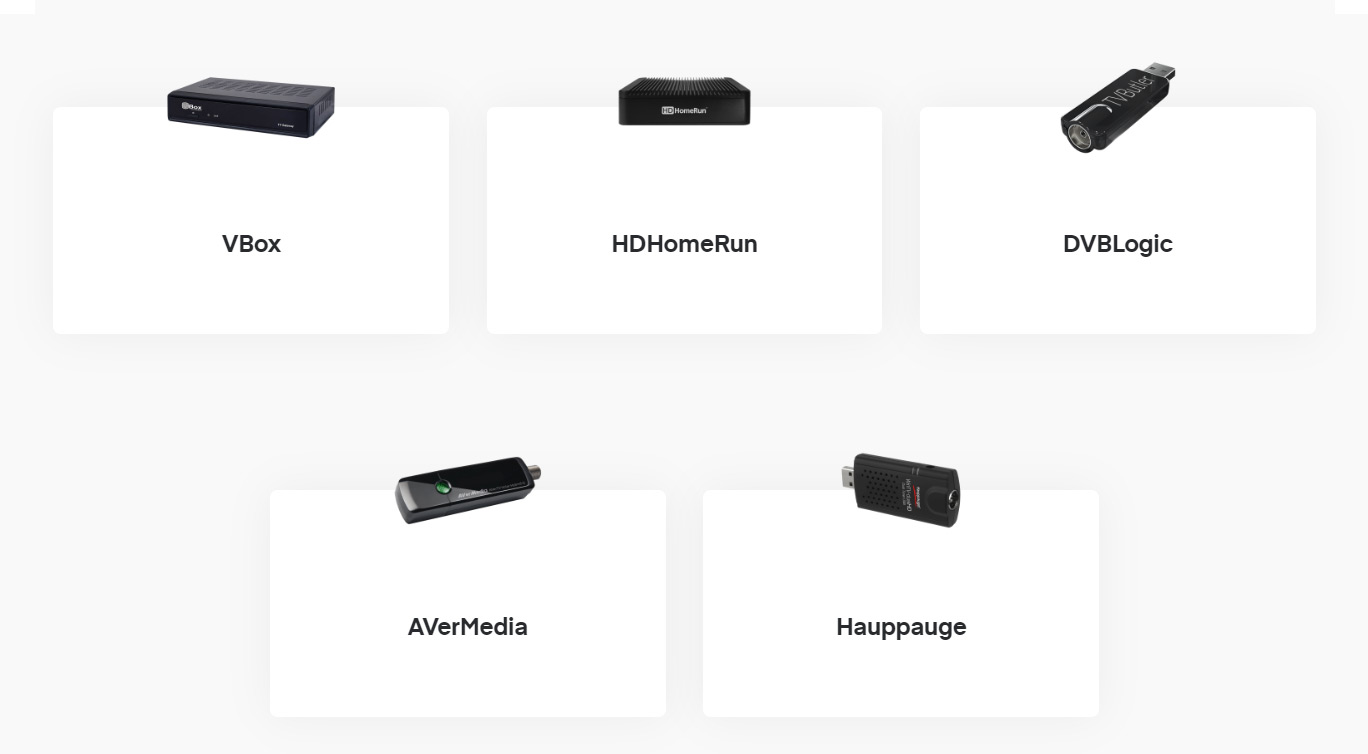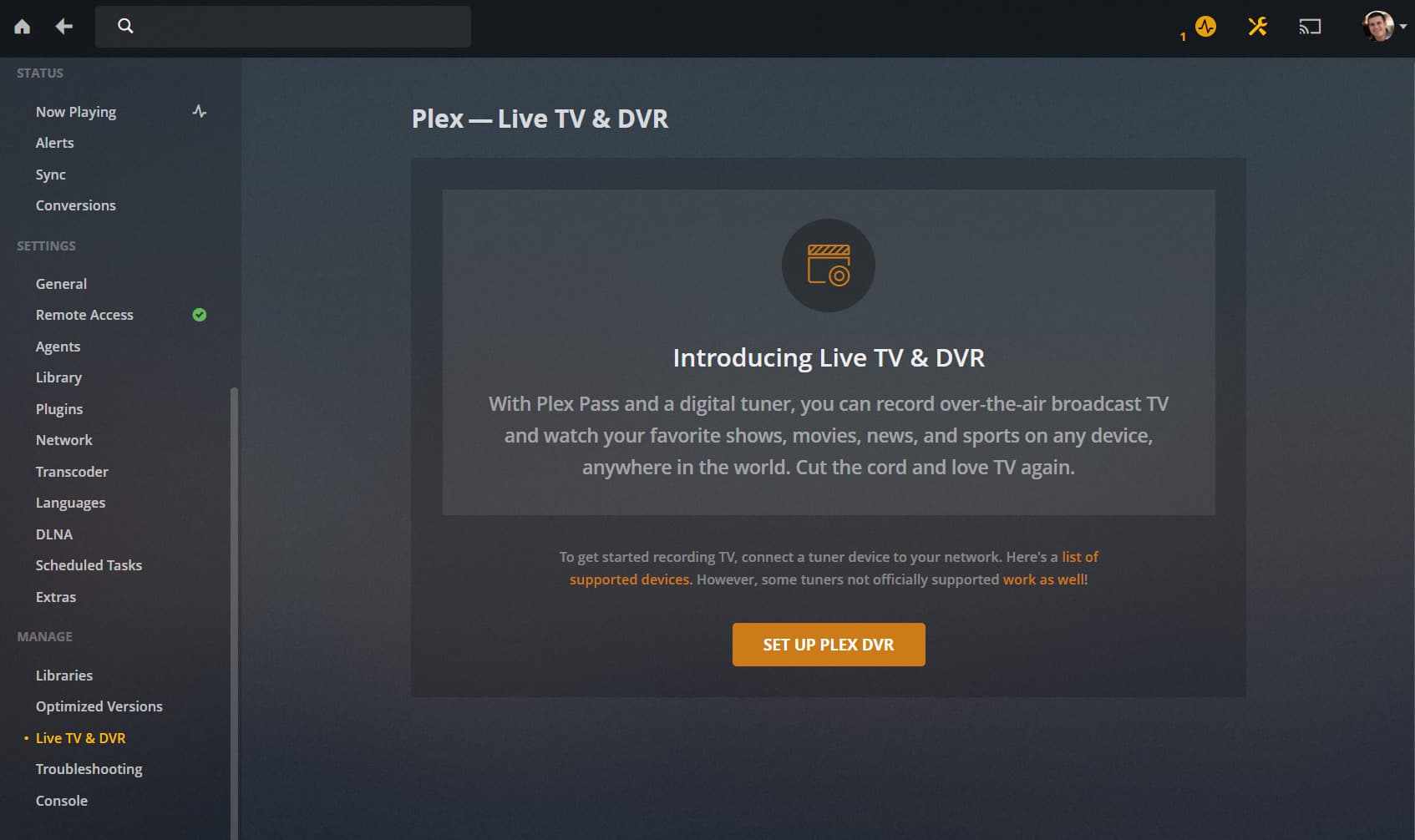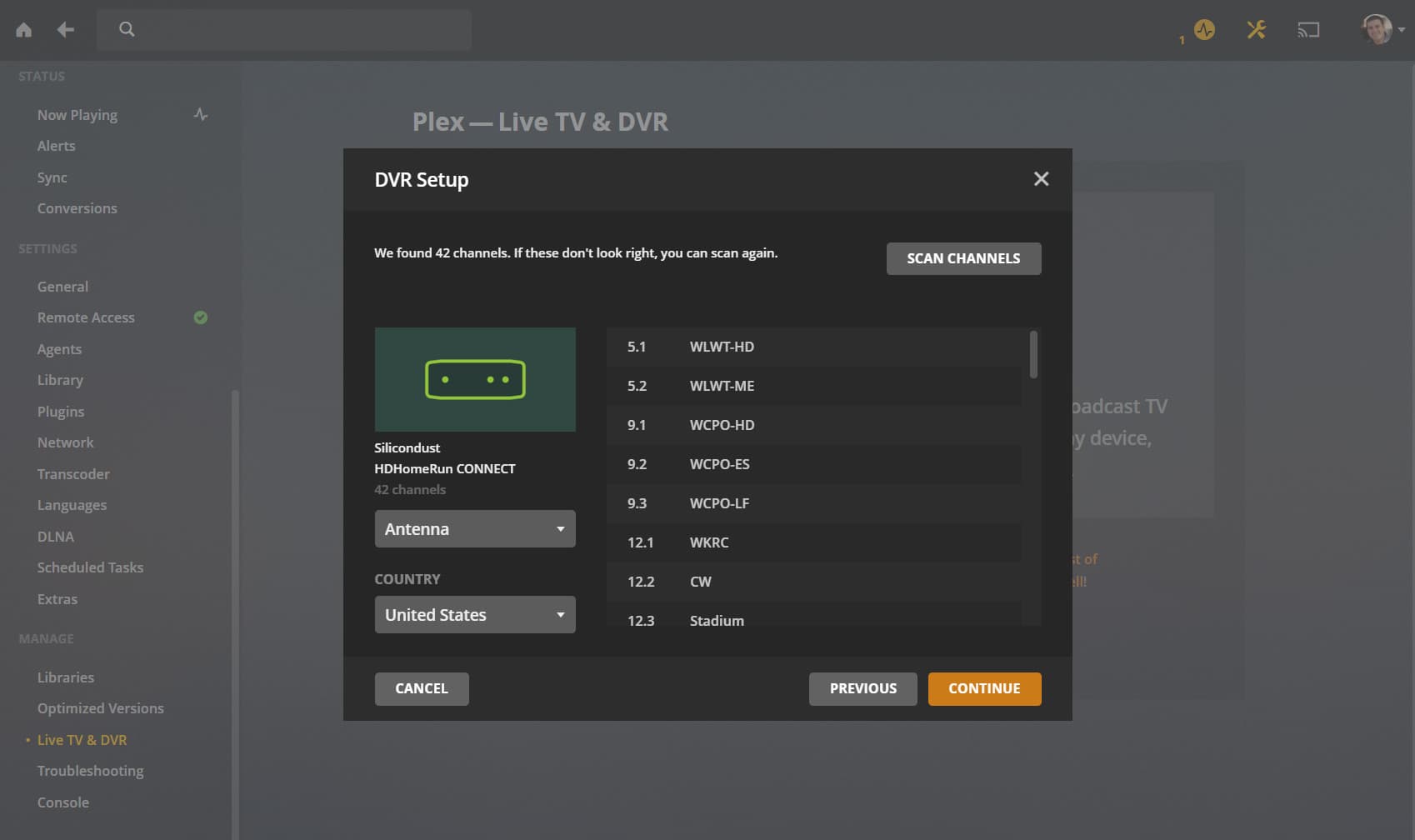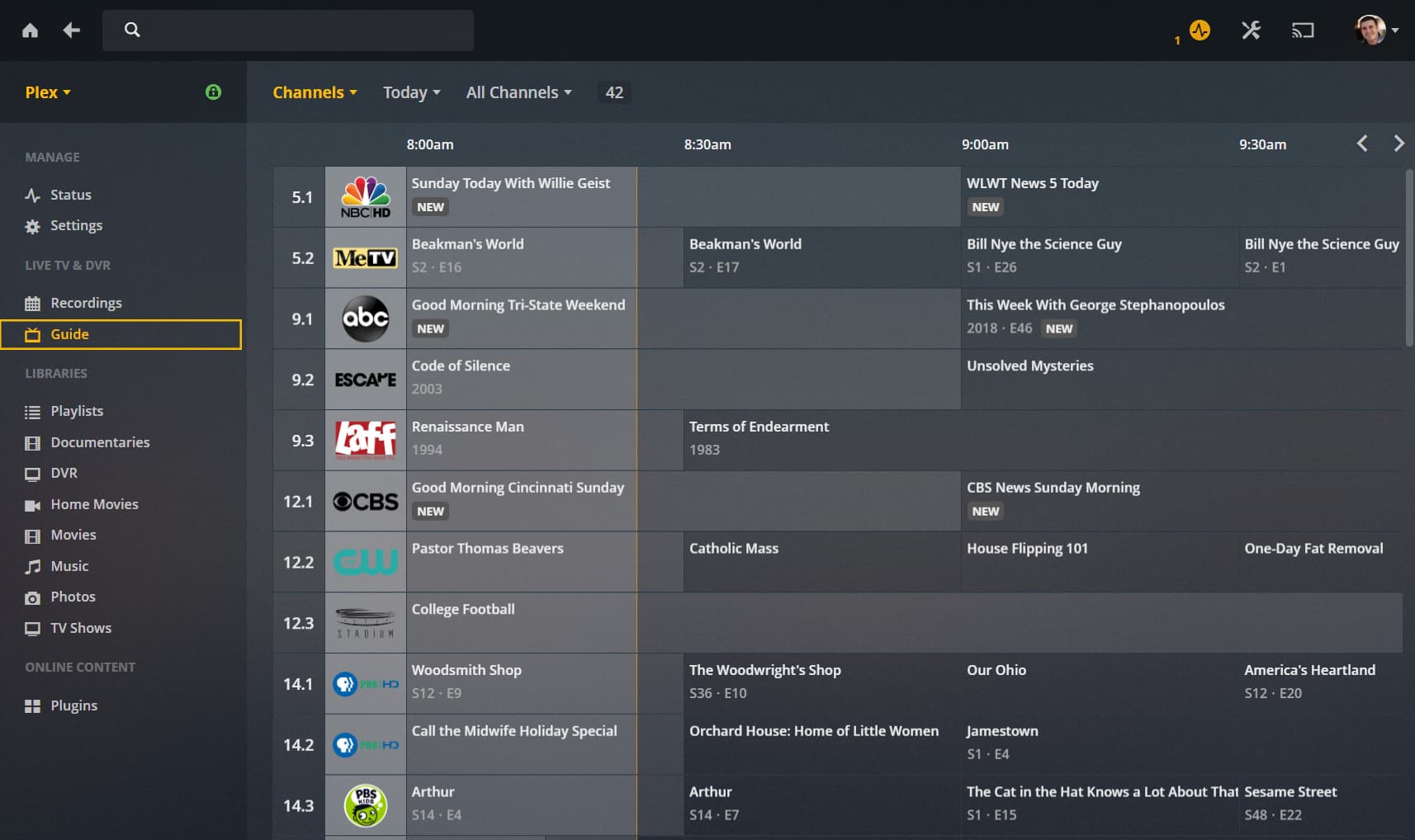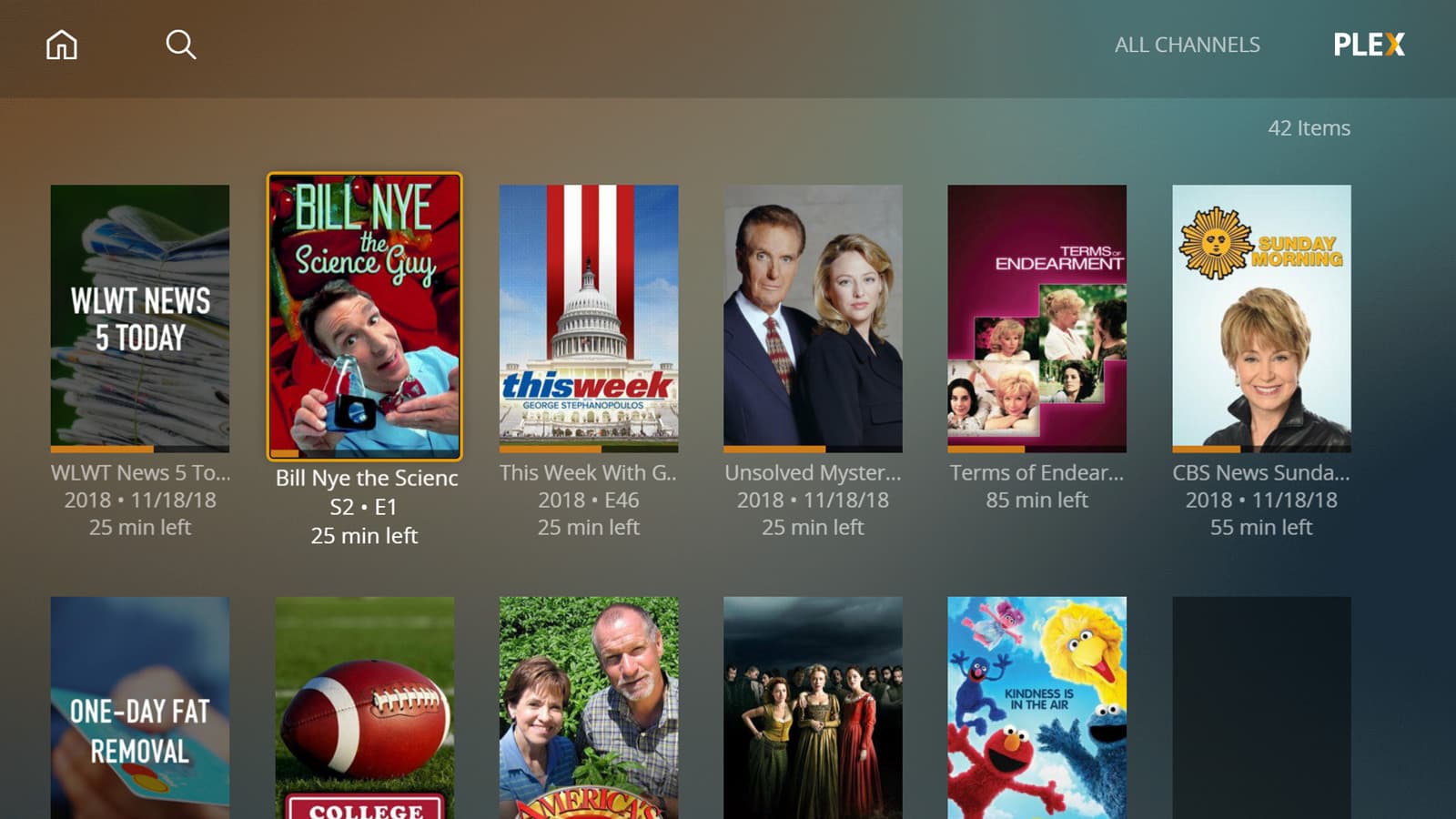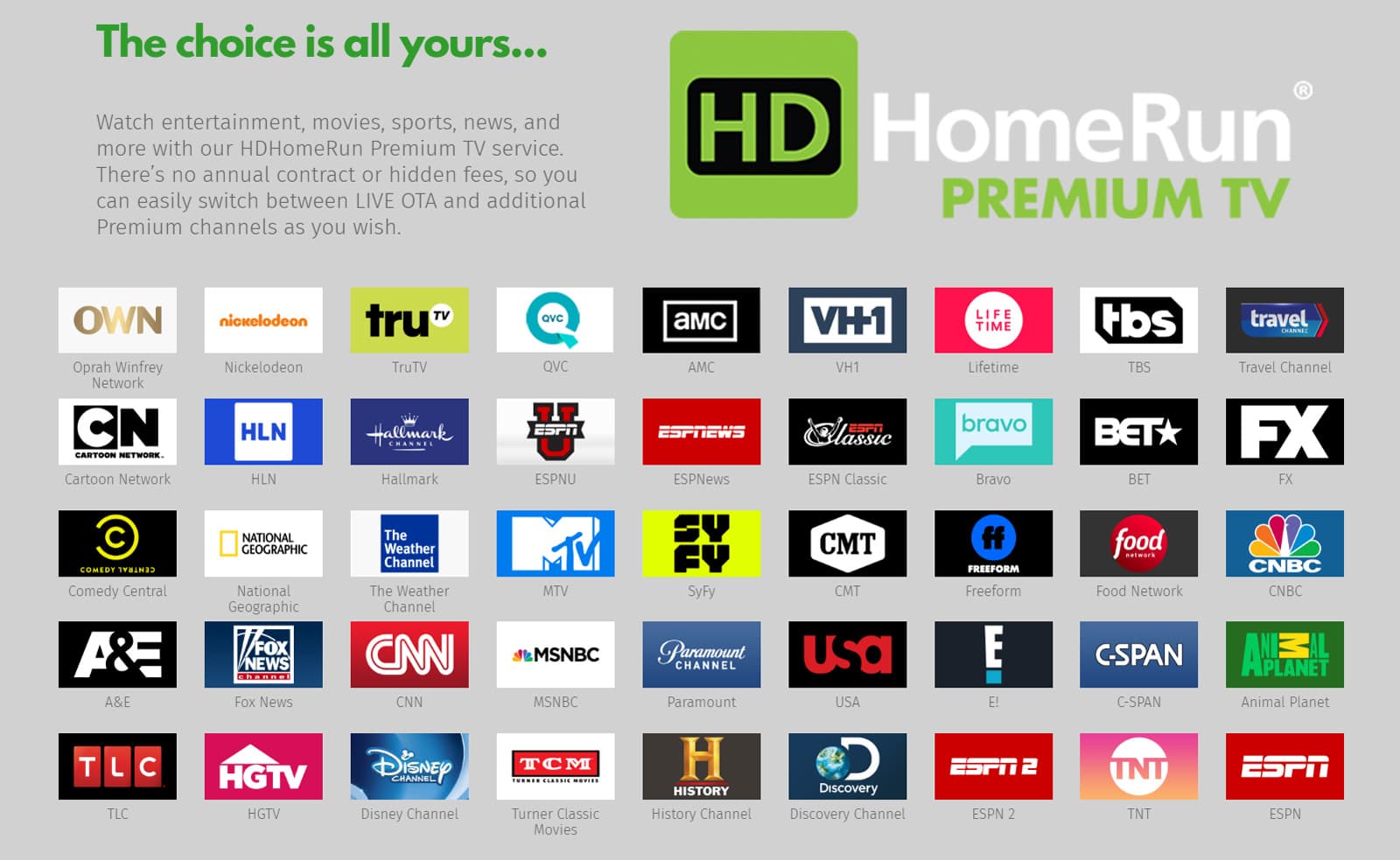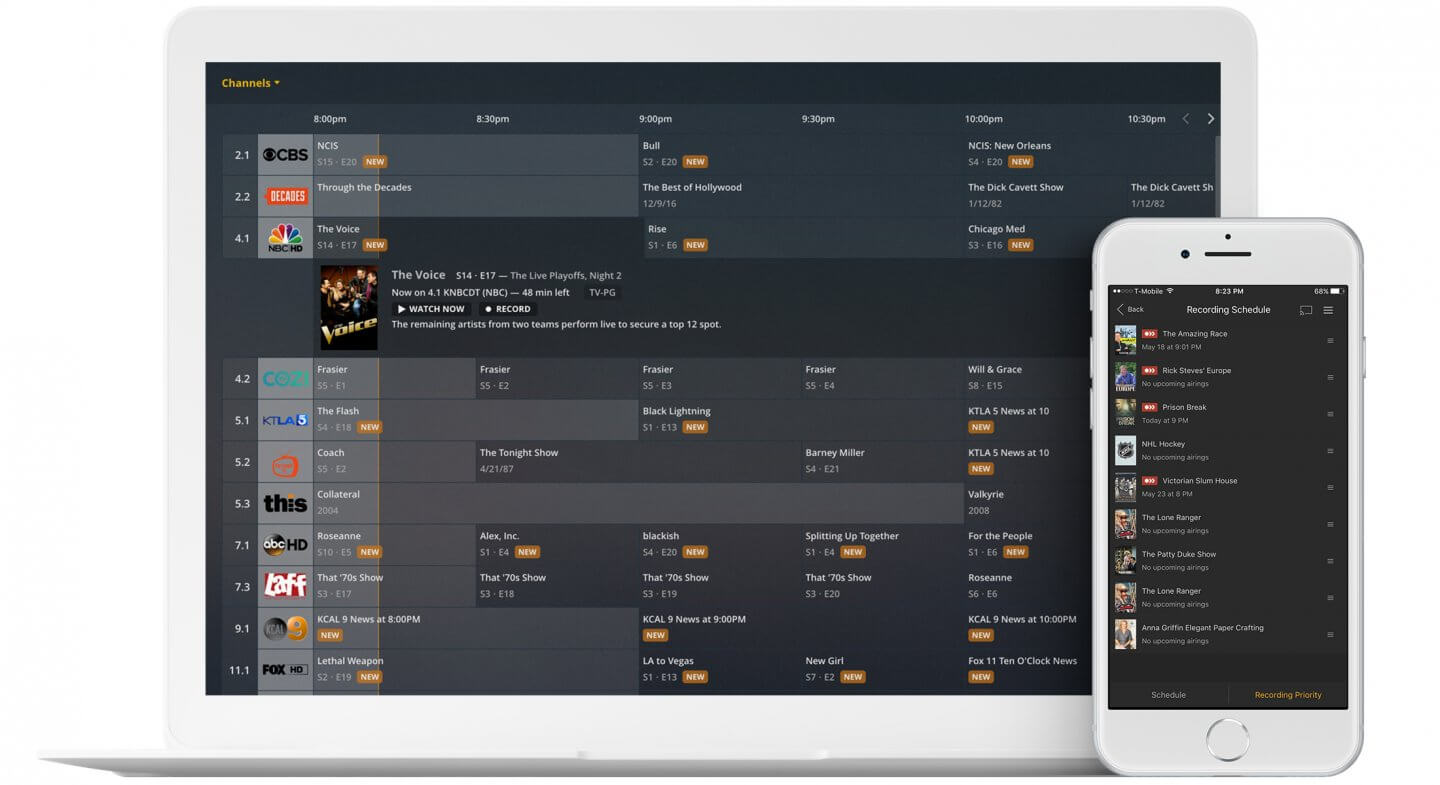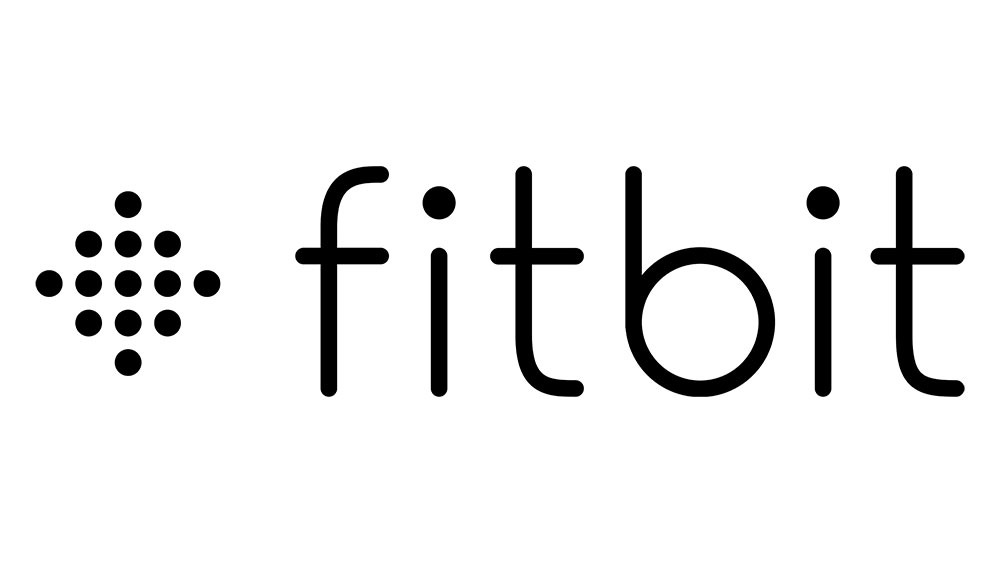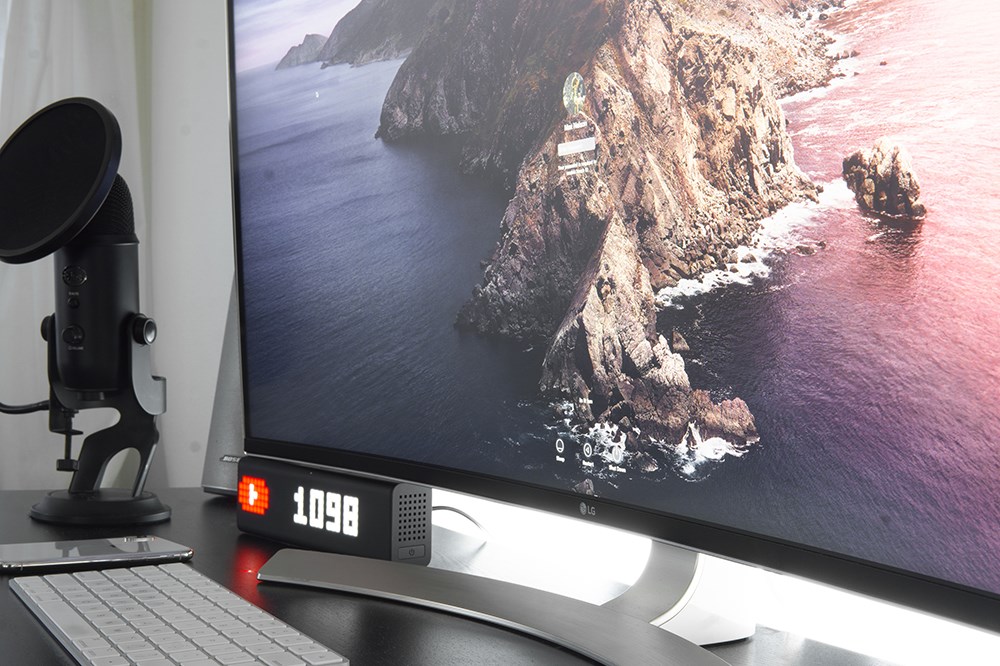Plex Live TV & DVR: An Imperfect But Essential Tool for Cord Cutters
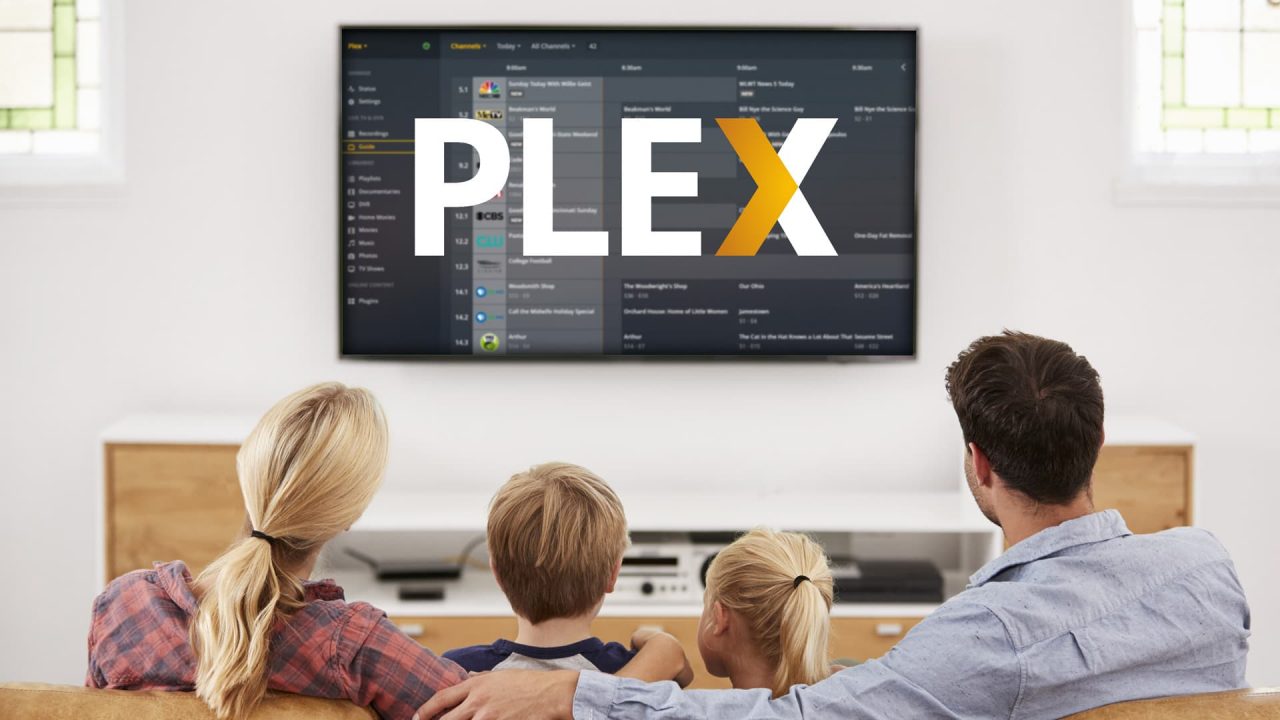
Plex, the popular media service, was originally designed to let users easily manage and play their own existing media files, from home movies to digital music collections to ripped copies of your Blu-rays and DVDs. And while Plex excels at this task, it was always missing one key component that prevented it from being a true cord cutting solution: Live TV.
Thankfully that deficiency has been remedied in recent years, with Plex first introducing a DVR feature in late 2016 before adding a full-featured live TV component last year. Plex Live TV integrates directly into your existing media library and offers some really cool features, although there are several caveats and issues even today, more than a year after its initial launch.
But after testing the feature extensively over the past several months, we feel that the benefits of Plex Live TV outweigh its few issues for many users looking to cut the cord. Read on for our look at Plex Live TV and why we think it should be part of any cord cutter’s setup.
Plex Live TV Requirements
While the Plex Media Server and many of its playback clients are free, the company restricts certain features and functionality to paid Plex Pass subscribers, and Live TV is one of these restricted features. Plex Pass prices range from $14.99 for three months to $39.99 for a year. There’s also a “Lifetime” option currently priced at $119.99, and Plex occasionally advertises special discounts for Lifetime memberships with prices as low as $74.99. As a paid Plex Pass subscriber for many years, I find the benefits to be well worth the cost, but you’ll need to weigh your own planned uses for Plex against the Plex Pass subscription price, as it’s unlikely that a feature like Live TV will escape the paywall anytime soon.
In addition to a Plex Pass, you’ll also need some hardware in order to use Plex Live TV and DVR, specifically a TV tuner and antenna (for over-the-air broadcasts) or a cable-compatible tuner and active feed for cable signals. Note, however, that Plex is not compatible with the encrypted cable TV signals that are increasingly common in the United States, so you may not receive all of your channels if you go this route.
Plex maintains a list of compatible TV tuners, with options from several companies including HDHomeRun, AVerMedia, and Hauppauge. In our testing, we’re using an HDHomeRun, specifically the HDHomeRun Connect Duo, which is a two-tuner model. Prices for TV tuners range from around $50 to $150 for the higher-end quad-tuner options. You’ll need one tuner for every simultaneous live or recorded stream, so take that into account when choosing a device.
As for antennas, Plex and your TV tuner will work with any digital antenna, it’s simply a matter of choosing one that is powerful enough to receive your desired local channels. Due to factors such as elevation, natural and artificial obstacles, and building materials, you won’t know for sure if a particular antenna will work for you until you try it, but a good place to start is AntennaWeb. Using the site’s reception calculator, you can enter your address and see a mapped look at the location and distance of your local broadcasting towers. The site also recommends certain classes of antennas based on the size and power you’ll likely need to tune a particular channel. Again, it’s not a perfect calculation, but it gives you a good starting point for finding the right antenna.
If you want to be able to pause and record Live TV, you’ll need to have your Plex Media Server set up with access to adequate storage, such as the internal drives in the computer that’s running the server software, an external hard drive, or a NAS. The amount of storage depends on how much you plan to record. For many users, a simple 1TB external drive may suffice, while TV junkies may want to consider something more robust. If you’re already using Plex for your local media, you should be all set. But those new to Plex will want to take the potential cost of storage into consideration.
Finally, Plex Live TV requires that your Plex Media Server device be capable of transcoding. If your server is running on a PC, Mac, or higher-end NAS you’re likely fine (assuming it is sufficiently powerful). However, some lower-end NAS devices do not support transcoding.
So, to recap, in order to use Plex Live TV and DVR you’ll need:
- Plex Pass
- Compatible TV Tuner
- Digital Antenna
- Adequate Storage
- Transcode-capable Plex Media Server
That may seem like a big list, but many current Plex users likely already have most of the required components.
Setting Up Plex Live TV
The Plex website has detailed instructions for adding Live TV and DVR to your existing Plex Media Server, but the basic setup is simple. Once you’ve installed your TV tuner and connected the antenna, just launch the Plex Web interface and head to Settings > Manage > Live TV & DVR.
The setup wizard should automatically detect your tuner and walk you through the setup process, including scanning for channels, setting your location, and downloading programming guide data.
Once all of your guide data has been downloaded, you’ll find your Live TV channels accessible from the Live TV & DVR section of the Plex Web interface, or any Plex client that supports live TV.
In addition to browsing and watching live broadcasts, you can select any guide listing to see more information about the program or schedule a recording, either as a one-off for a single airing or as an ongoing schedule to record all episodes of that show. You can configure Plex to store your recordings in their own separate library, or have it store them in your existing TV Show library.
This last option can be particularly useful because it allows you to integrate your existing local media with live TV recordings. Say, for example, that you own and ripped the first season of a TV show and imported those files into your Plex library. If that show is still airing new or syndicated episodes, you can configure Plex to record all missing episodes of that show which will then, over time at least, fill in the missing seasons in your existing TV Shows library.
Plex also offers common features found on traditional set-top DVRs, including the ability to pad recordings by starting a scheduled recording early or continuing to record for a set number of minutes after the scheduled end (particularly useful for recording sporting events). There’s also a feature that will attempt to detect and automatically remove commercials from your recordings. This can be incredibly useful, but it’s also not always accurate in its commercial detection, so you do risk seeing the odd commercial or potentially having part of the actual show removed due to a false positive.
Thankfully, there’s the option to integrate custom scripts into the Plex DVR process, so you can setup your own post-processing encoding and management, or integrate more advanced commercial removal via tools like MCEBuddy.
Less Than Perfect
Overall, Plex Live TV and DVR is easy to set up and use, and it can be customized in ways that make it quite powerful. But there are still some drawbacks that might make this solution frustrating for some users.
The first issue is that the grid-style programming guide seen in the screenshots above is currently not available for most Plex clients. Instead, you’ll see a poster-style layout displaying the shows that are on right now and those, based on category, that are airing soon.
This is a unique way of viewing programming guide data, and some users may even prefer it, but I and many others I’ve spoken to strongly prefer the traditional grid layout. The lack of a grid layout for the guide was initially due to a patent issue covering that design, but Plex has apparently worked out an arrangement that lets them use the grid-style guide. Unfortunately, only three clients support the grid layout to date: Plex Web, Apple TV, and Android TV. Plex has promised to expand this feature to additional clients but it has been months with no progress on that front. So, if you’re using one of the aforementioned clients, you’ll feel right at home. If not, you may be stuck explaining the uncommon poster-style programming guide to friends and family until Plex finally adds the feature.
The second issue we encountered with Plex Live TV is slow channel switching. Like your other Plex media, you can stream Live TV remotely to your compatible devices, but even on the local network we found that switching between live TV channels took a noticeably long time. On devices like the Roku and Apple TV, switching channels could take up to 10 seconds. On Plex Web, the initial switch was made much faster, but then the stream would pause or stutter for several seconds making the overall time between switching channels and actually being able to watch something not much better.
This delay in switching channels will likely be one of the biggest frustrations you encounter, especially for those coming from traditional cable. It’s not the end of the world, and once you’ve tuned to the desired channel everything is fine, but the delay makes the process of “channel surfing” quite impractical.
Plex Live TV & Cable
As mentioned previously, Plex does support cable signals, but only those that are unencrypted. One potential alternative to traditional cable or satellite is the recently launched HDHomeRun Premium TV, a subscription streaming service. Like other services such as DirecTV NOW or YouTube TV, HDHomeRun Premium TV streams cable channels via the Internet. Unlike those other services, however, the HDHomeRun offering integrates with the company’s TV tuner hardware, and is therefore compatible with Plex.
While the service doesn’t require Plex and works with a variety of apps, it also integrates quite nicely into Plex and provides access to these premium cable channels right alongside your over-the-air local channels. You can browse, watch, and record the cable channels just like you would with an over-the-air channel, as well as stream them remotely. The only downside is that picture quality, while certainly acceptable, is a bit lower than some competing streaming services and traditional cable and satellite signals.
But for $35 per month, HDHomeRun Premium TV is currently the best way to keep all of your live and recorded media contained within a single app.
Conclusion
When we cut the cord several years ago, I didn’t have any solution for live TV, assuming that our quite large existing Plex library would suffice. But my wife and I quickly realized that we occasionally missed the convenience of live TV for things like news and sports. We tried out a few subscription streaming services, but found that we didn’t watch them enough to justify the cost.
With Plex Live TV, however, there’s no monthly fees beyond the initial hardware costs. For existing Plex Pass members, it’s a no-brainer to at least try the service. And for those without a Plex Pass, its cost pales in comparison to the typical monthly cable bill. But best of all is the integration of live TV and DVR recordings into our existing Plex library. There’s no need to switch between different apps or set-top boxes; everything we want to watch can be found within a single interface, both from the couch at home or on our mobile devices while on the go.
I’m eagerly awaiting the expansion of the grid-style programming guide to more devices, and I hope that future software updates will improve the channel switching time, but, overall, Plex Live TV has been a great addition to our home media setup and is definitely worth checking out for yourself.
Review Disclosure: Plex loaned us a TV tuner and antenna which were used to conduct this review. The opinions contained in the review are wholly ours and this content was not subject to review or approval by anyone outside of TekRevue. Neither TekRevue nor any of its staff were paid or compensated in any way for the publication of this review, and TekRevue does not have an affiliate relationship with Plex or its partners.




